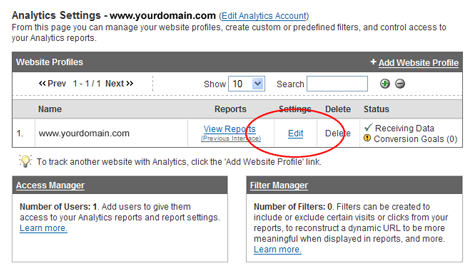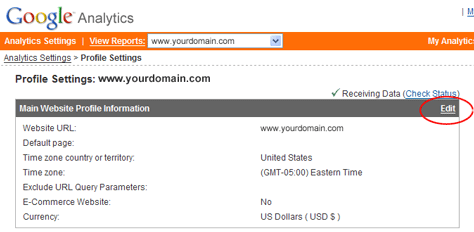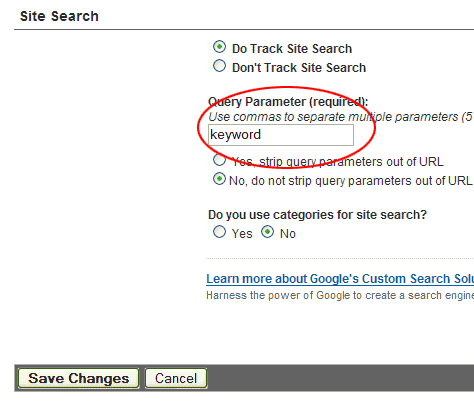 Cross-sells and up-sells are popular because they can increase average order size for a single customer. But can they be distracting and hurt conversion? Many online retailers avoid placing cross-sells or up-sells at sensitive buying stages such as the start of the checkout process. …
Cross-sells and up-sells are popular because they can increase average order size for a single customer. But can they be distracting and hurt conversion? Many online retailers avoid placing cross-sells or up-sells at sensitive buying stages such as the start of the checkout process. …
But let’s go back a bit: Tracking your visitors’ every move on your ecommerce site to understand what they liked, disliked, browsed to, selected, etc. (behavior tracking, personalization) can be considered to be either:
1. Really cool because visitors may feel they have their own personal shopper that will continue to recommend other items they may enjoy
2. Intrusive because every movement the visitor makes on the site is tracked and recorded
3. Annoying because the selling just won’t stop
Retail Examples of Cross-Sells and Up-Sells
Cross-sells and up-sells are used on the majority of ecommerce websites, and are rather successful. In the most primitive cases, an ecommerce store will manually set up cross-sells and up-sells via product catalog administration. In the more complex scenarios, ecommerce companies rely on recommendation software that monitors a customer’s activity on the site from what they are browsing, to what items they select to place inside their cart. Based on that activity the recommendation software suggests cross-sells and up-sells to the site visitor.
Below is a cross-sell on a product page of Lancome.com:

In this case, I was looking at the product page for eyeliner product. Lancome successfully recommended complimentary items.
When I added the eyeliner to my cart, again Lancome successfully displayed cross-sells recommendations under a title “Complete this Product with.”

Amazon.com bases cross-sells and up-sells on information they gather from the activity of other customers who purchased or viewed the same items being viewed or selected:
On the product page of a denim skirt I wanted to purchase, Amazon.com displayed the following recommendations:

After I placed the items in the cart: two types of recommendation displays appear:
1. Recommendations for items across our store…
2. Customers who bought items in your shopping cart also bought…

So when I place a denim skirt in my cart, I am presented with:
- 2 other non-denim skirts
- A whitepaper (which is really random)
Sometimes the recommendations are repeated, but the above screen shots display the standard Amazon response to cross-sells and up-sells.
Where is it most effective place to display cross-sells and up-sells?
Clearly, with every ecommerce company, there are variations to when and where to suggest recommendations for the user.
Common practices of placing cross-sells and up-sells:
- Product page
- Shopping cart view
- Initial stages of the checkout process
- After an order is placed
Many ecommerce companies in general feel that displaying product recommendations during the checkout process can increase cart abandonment rates and lower conversion significantly.
A deeper look at Shopping Cart Cross-Sells:
Studies show that visitors who enter their shopping cart and decide to continue shopping may not return 75% of the time. Offering customers cross-sells could potentially encourage customers to navigate away from the shopping cart to view the items, possibly to never return.
However, a study conducted by MyBuys.com based on the experience of 1,345 ecommerce shoppers indicates that the majority of consumers expect online merchants to make additional recommendations. Additionally, 77% of consumers have made additional purchases when encountered with personalized recommendations.
Let’s examine two e-tailers different approaches to shopping cart cross-sells:
When I was ready to complete my order at Victoria’s Secret, I was directed to my shopping bag, the first step in the checkout process. Victoria’s Secret offers an exclusive sale item pop-up right within my shopping cart. The Cotton Rib Henley Sale item was an attempt at a cross-sell:

I click on the “Buy Now” button on the pop-up, and I am re-directed to the Cotton Rib Henley Shirt Page:

I was navigated away from the shopping cart, and I simply can’t add the Cotton Rib Henley Sweater! I have to scroll down through the other cross-sells in order to add to cart and get back to the shopping cart (and be bombarded once more with additional pop-up cross-sells).
Lancome.com does it a bit differently. My shopping bag opens up alongside the product page and indicates that I can “Complete this Product with” a variety of different items. If my cursor scrolls on top of the recommended cross-sell products, a pink icon “Quick Shop” appears.

After clicking on the icon, I haven’t navigated away from the cart nor the product page, but another pop-up with the newly selected product appears.

Each approach is completely different; Victoria’s Secret directed me to their product page ultimately navigating me away from the checkout process. Lancome’s approach, although untraditional, kept me on the first page of the checkout process in the background and I actually completed the order.
What product selection should you recommend within the shopping cart?
a. Complimentary items: Ecommerce companies and recommendation specialists find that listing complimentary items is the most effective way to avoid raising cart abandonment rates and raise average order size. I was interested to see what type of cross-sell recommendations I would receive at an electronics ecommerce site such as BestBuy.com. Not surprisingly, a cross-sell to purchase their service plan pops up:

Best Buy could benefit from including an add to cart option immediately within this pop-up rather than forcing the user to click on the service plan details, get to another pop up page and add the item. I realize Best Buy’s struggle — there are details related to the service plan that must be addressed by the buyer before the actual purchase. When I clicked on the service plan cross-sell, I am presented with another pop-up that describes the service plan and asks me to select my state before I can add it to my cart:

They do not force the user to navigate away from the cart, which is a plus.
After seeing what ecommerce electronic stores do, I moved onto a very different category: pets. Petsmart.com offers complimentary items on the right side of the shopping cart.

By giving consumers complimentary recommendations you are helping them avoid going back out to the online store and locate these items. However, I am forced to navigate away from my cart being directed to the product page to view the selected item.
b. Mismatching items: Offering items that are unrelated to the shopping cart contents can be more challenging. After arriving on the Stacksandstacks website, I added “mini basting brushes” to my cart:

Stacks and Stacks offers unrelated cross-sells within my cart, such as a closet shoe rack, wall tie organizer, etc. The issue from the perspective of the buyer is that when a buyer visits a site with something in particular in mind (a list of what he/she wants to buy), cross-selling with unrelated items may not be an effective approach. MyBuys.com research found only 2% of visitors felt that product recommendations related to them.
If you decide to offer unrelated cross sells within the cart keep a few things in mind:
- Offering sale items is more lucrative and encouraging for the buyer to consider
- Offer items with “Free Shipping” option can also be an incentive to purchase
- In our tests, we noticed that instead of labeling the recommendations as “You May Also Like”, you can do a lot better by using the phrase “Customers who purchased your item also enjoyed.” The second phrase draws more attention the site visitor because you are combining common interests which appeals to the humanistic visitor. Of course there are no set rules, so test both labels and see what works better for your site.
I visited Headsets.com where I added the Plantronics noise-canceling wireless headset to my cart:

Headsets.com recommends a list of items that are mix between mismatches and items that are complementary. They also have the recommendations labeled as: “Customers Who Bought the Above Item Also Bought” which again is a helpful way of creating feelings of commonality and association.
c. Recently Viewed: Amazon sums it up best by offering on the right side of my shopping cart a clear display of all the items I browsed through during my shopping experience. Any reluctance that I may have had in selecting one of the recently viewed items might be rehashed, encouraging me to go back and explore the item once more. Amazon.com has always pushed the fold in ecommerce implementations and design:

Notice that the items are just listed without the images except the “featured item” at the bottom of the list.
d. Matching Items or hybrid: If I’ve recently viewed golf gloves and made a selection, offering me more golf gloves may not be effective since I just placed a pair in my cart.

Golfsmith.com offers a hybrid of choices. I had selected a pair of gloves, and the cross-sells included a different pair of gloves. There are also complementary items that may appeal to a golfer in general: golf balls and a pack of tees. Usually, adding an item such as golf-gloves is because of a need that I have for them, so offering me more gloves may not be useful.
One of the biggest fears of displaying items in the shopping cart is losing the customer to a growing statistic of cart abandonment. However, if you are able to increase average order size by understand what appeals to your site visitor through optimization and testing, cross-selling is a great way to accomplish that.


 If I told you that you could perform 5 easy steps that would allow you to read the mind of your website visitors you would want to hear them wouldn’t you?
If I told you that you could perform 5 easy steps that would allow you to read the mind of your website visitors you would want to hear them wouldn’t you? 





















